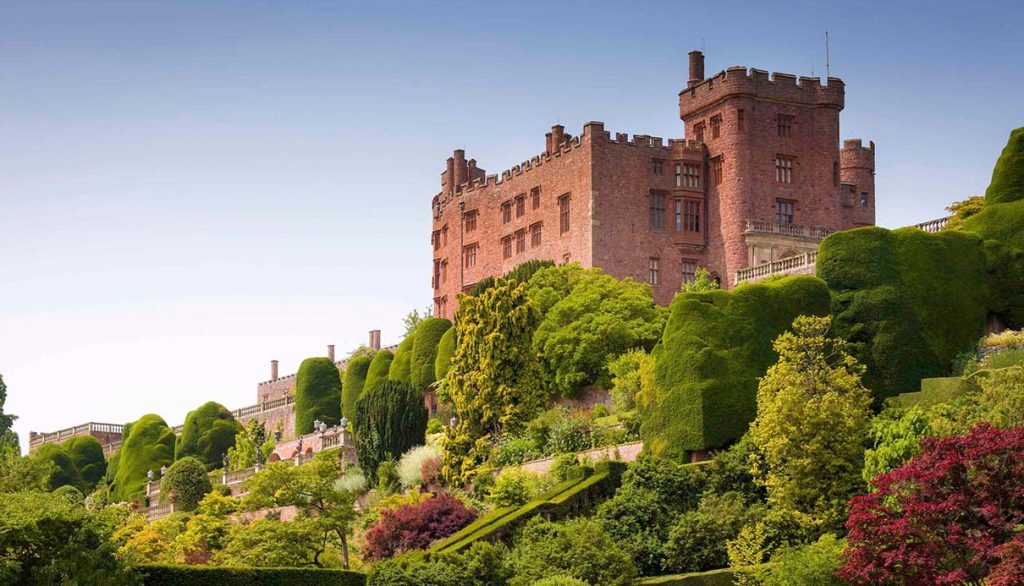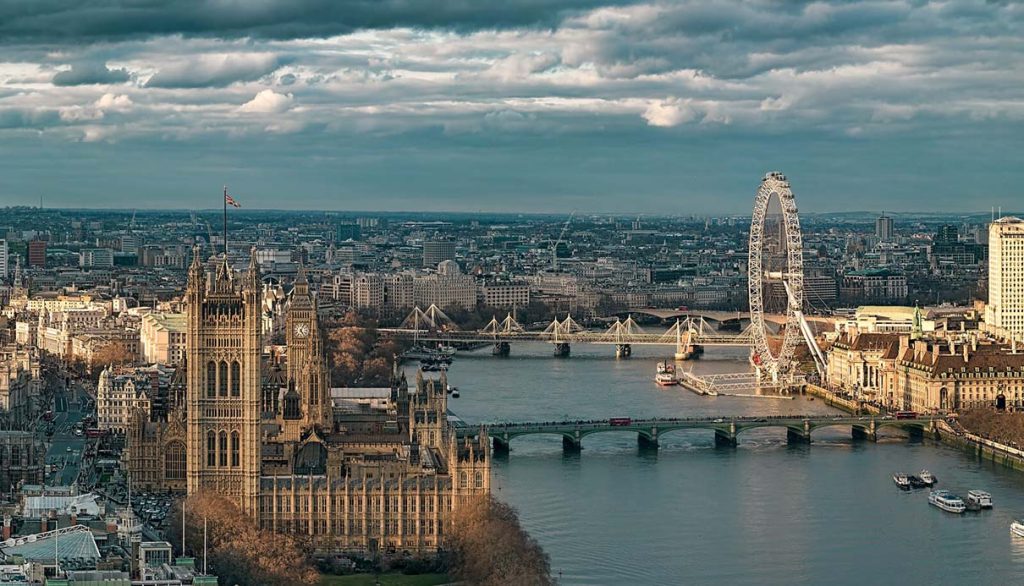Nestled atop a volcanic hill in the heart of Scotland, Stirling Castle stands as a sentinel of history, where time appears to have stood still amidst the stunning landscapes of this captivating country.I was fortunate to experience the wonder of this iconic castle, which proved to be an extraordinary journey through the annals of history. let’s embark on an exploration of Stirling Castle and uncover why it serves as a must-visit destination for history aficionados and wanderlust-driven travelers alike.
A Glimpse into the Past
Stirling Castle, a stone sentinel that has stood through the ages, holds within its walls the echoes of Scotland’s most momentous historical events. It is a place where the past feels remarkably present, and the stories of valor, royalty, and intrigue come to life. My visit to this ancient fortress was a journey through time, a chance to immerse myself in the rich tapestry of Scotland’s history.
As I approached Stirling Castle, its imposing stone walls and formidable towers loomed before me, casting a spell of awe and reverence. The sense of centuries gone by enveloped me, and I could feel the weight of history pressing upon my shoulders. It was as if I had stepped into a portal that would transport me to a bygone era.
The exploration of the castle’s grounds began on the esplanade, a vast open space that provided a panoramic view of the surrounding landscape. From this elevated vantage point, I could gaze upon the Wallace Monument, a tribute to Scotland’s national hero, and the undulating Ochil Hills in the distance. It was a breathtaking prelude to the historical treasure trove that awaited me within the castle’s walls.
As I entered the castle, I was met with a sensory journey into the past. The sound of my footsteps on the cobbled paths echoed through the courtyard, reverberating with the footsteps of knights, kings, and countless others who had traversed these same stones. The cool breeze carried with it a hint of history, a whispered secret that the castle seemed eager to share.
One of the highlights of my visit was the Great Hall, a magnificent chamber where feasts, celebrations, and important gatherings had taken place. The sheer scale of the hall left me in awe, and I could almost hear the echoes of jubilant voices and clinking goblets that had once filled the space. It was here that James IV of Scotland held his legendary feasts, where alliances were forged, and where the grandeur of the Scottish monarchy was on full display.
My journey through Stirling Castle also led me to the Royal Palace, a place of opulence and refinement. As I wandered through the palace’s rooms, I marveled at the intricate tapestries that adorned the walls, each one a masterpiece of artistry and storytelling. The royal apartments provided a glimpse into the lives of the monarchs who had called this castle home, and I could almost envision the grand ceremonies and private moments that had unfolded within these walls.
The castle’s history was not without its darker chapters, and one such chapter was revealed in the Royal Chapel. It was here that the infant son of James VI, the future king of both Scotland and England, was baptized. The chapel’s simple yet poignant beauty served as a reminder of the complex and often tumultuous history of the British Isles.
As I ascended the castle’s towers, I was treated to breathtaking views of the Stirling Bridge and the meandering River Forth. It was from these very towers that the English army, led by Edward I, had been defeated by William Wallace in the Battle of Stirling Bridge in 1297. The view was a vivid reminder of the strategic importance of Stirling Castle in Scotland’s fight for independence.
The atmosphere within the castle was imbued with a sense of timelessness. The whisper of the wind, the age-worn stone walls, and the stories embedded in every corner created an ambiance that transcended the boundaries of the present. I felt as though I had become a part of the castle’s history, a witness to the events that had shaped the destiny of a nation.
Stirling Castle’s rich history is a testament to the resilience and fortitude of the Scottish people. It has withstood sieges, witnessed coronations, and served as a backdrop for the defining moments of Scotland’s past. My visit to this remarkable fortress was a journey through time, an opportunity to connect with the spirit of a nation and to stand in the footsteps of those who had come before.
In conclusion, Stirling Castle is not merely a tourist attraction; it is a living testament to the indomitable spirit of Scotland. It is a place where history breathes, and where the past and present coexist in harmonious resonance. My visit to Stirling Castle was an unforgettable experience, a chance to walk in the shadows of giants and to be a part of a narrative that continues to unfold with each passing day.

Historical Highlights
- Great Hall: Stepping into the Great Hall is akin to stepping into the annals of a medieval epic. The grandeur of the hall is truly awe-inspiring, and it is effortless to envision the feasts and gatherings that transpired within its hallowed walls.
- Royal Palace: The Royal Palace within the castle is a testament to Renaissance architecture. Its chambers, adorned with intricate decorations, including those of the King and Queen, are a testament to the opulence of the era.
- Stirling Heads Gallery: The Stirling Heads Gallery showcases a mesmerizing collection of intricately carved oak ceiling medallions, each bearing the likeness of a different historical figure or symbol. These masterpieces offer a captivating glimpse into the personalities and events that have shaped the castle’s history.
The Battle of Stirling Bridge
The centerpiece of my exploration was the Stirling Bridge itself. As I walked across the modern bridge, I couldn’t help but envision the scene from over seven centuries ago. The original wooden bridge had stood in the same spot, its narrow confines playing a crucial role in the outcome of the battle.
The Battle of Stirling Bridge, fought on September 11, 1297, was a David-and-Goliath struggle. William Wallace and his Scottish forces faced the mighty army of Edward I of England. The tactical brilliance of Wallace became evident as I studied the landscape. The River Forth, with its steep banks and the bridge’s narrow passage, forced the English army into a confined space, negating its numerical advantage.
As I stood at the very spot where the bridge had once spanned the river, I could picture the Scottish schiltrons, tightly packed formations of spearmen, waiting on the opposite side. The English cavalry, hindered by the bridge’s limitations, had no room to maneuver. It was a testament to Wallace’s strategic prowess, and the spirit of Scottish resistance, that the battle had been fought and won on these very grounds.
Wallace’s Monument: A Tribute to Valor:
A short distance from the battlefield stood the Wallace Monument, a towering tribute to Scotland’s national hero, William Wallace. The monument, which offers panoramic views of the Stirling Bridge and the surrounding countryside, was a fitting homage to the man who had led the Scottish forces to victory against all odds.
Climbing the spiral staircase within the monument, I reached the Crown Chamber, where a statue of William Wallace stood proudly. It was an emotional moment, standing in the presence of the man whose indomitable spirit had inspired generations of Scots. From the monument’s lofty heights, I gazed upon the Stirling Bridge, the very place where Wallace’s bravery had turned the tides of history.
The Castle’s Strategic Role:
Stirling Castle, perched on its commanding position overlooking the battlefield, had played a vital role in the events of the battle. The castle had changed hands multiple times during the First War of Scottish Independence, and its possession was a matter of strategic significance.
The views from the castle’s towers, such as the Douglas Gardens and the Queen Anne Gardens, offered breathtaking panoramas of the surrounding landscape. The sight of the River Forth meandering through lush valleys was a picturesque moment that encapsulated the essence of Scotland’s natural allure.

My visit to Stirling Castle and the battlefield of Stirling Bridge was an immersive journey into Scotland’s history. It was a reminder of the courage of individuals like William Wallace, who stood against overwhelming odds in the name of freedom. The echoes of the past reverberated through the castle’s stones and the bridge’s arches, and I was grateful to have had the opportunity to relive this pivotal moment in Scottish history.
As I left Stirling Castle, I carried with me the indomitable spirit of the Scots who had fought for their independence. The history of this place was not confined to the pages of a book; it was alive in every stone, every gust of wind, and every view from the castle’s towers. Stirling Castle and the Battle of Stirling Bridge had become a part of my own history, a testament to the enduring human spirit in the face of adversity.
Engaging Exhibitions
Stirling Castle not only conserves history but also breathes life into it through captivating exhibitions and interactive displays. Visitors can delve deeper into the castle’s history, from its role in the Wars of Independence to its connections to royalty.
Stirling Castle transcends being merely a historic site; it is a portal to the past, a place where legends and lore come alive. It represents an extraordinary journey through time that immerses you in the tapestry of Scotland’s rich history. I wholeheartedly encourage you to make this enchanting castle an integral part of your Scottish sojourn. It is a destination where the echoes of yesteryears reverberate with each step, leaving you with indelible memories that will endure a lifetime. Stirling Castle is undoubtedly a jewel in Scotland’s crown, and a visit here promises a journey that will etch itself into your heart and soul.

